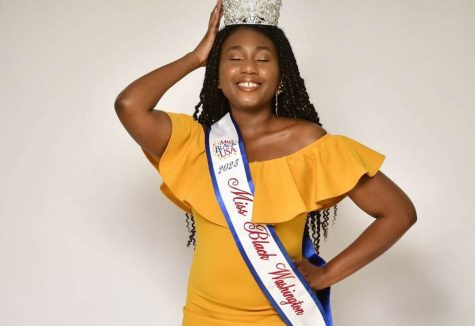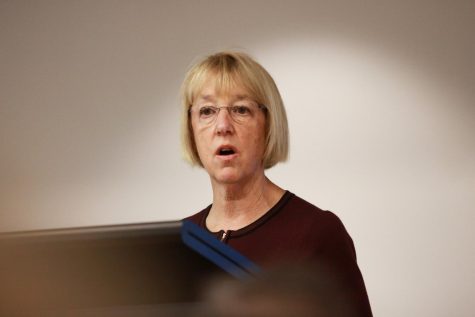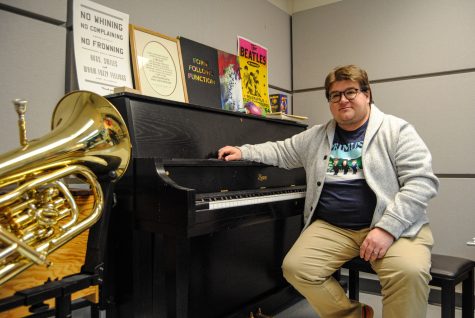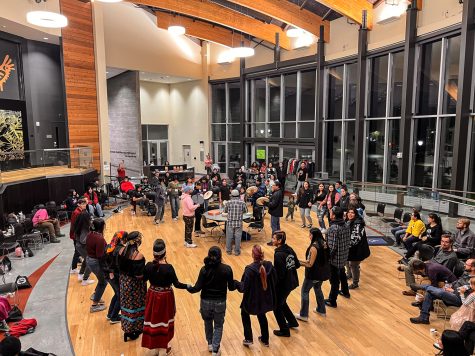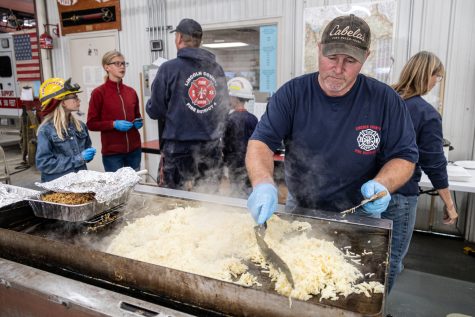Salmon harvest impacts Northwest culture
Idaho Fish and Game closed spring and summer chinook salmon fishing seasons on June 12 due to low adult salmon counts.
June 21, 2017
When thinking of endangered species, elephants and pandas usually come to mind. These and other listed animals are banned from sale, yet in America there is one endangered species whose meat is still found in grocery stores.
Pacific Coast salmon happen to claim that unique title.
Steve Katz, a WSU associate professor in the School of the Environment, said commercial sale of salmon is an exceptional case.
“It’s supposed to be illegal,” Katz said. “We’re not allowed to sell spotted owl meat in the grocery store.”
This is because not all species of salmon are protected under the 1973 Endangered Species Act, Katz said, allowing the multibillion-dollar harvest of non-listed salmon to continue. However, distinguishing species is difficult business.
“You’d have to shut down all harvest in order to guarantee that you’re not catching any endangered fish,” Katz said.
Bart Jarrett, owner and outfitter of the Northwest Fishing Guide Service based along the Clearwater River near Orofino, Idaho, said the commercial harvest industry continues because of revenue.
“It all boils down to money,” Jarrett said. “Someone is making a ton of money off selling those fish.”
Chris Donley, Washington Department of Fish & Wildlife fish program manager for the Spokane region, said extensive study of the harvesting process allows the industry to avoid harming endangered fish.
“There’s dozens of techniques and ways that allow us to separate out and be protective of the listed fish,” Donley said. “That doesn’t mean that none of them get harmed, but they get harmed at an allowable amount under the ESA umbrella. It’s a tough balancing act.”
Jarrett, who guides hundreds of people on the Clearwater during spring chinook salmon season, which began April 22, said commercial harvesting along the Columbia River has the biggest impact on the annual number of salmon in the Clearwater.
“You want to see our salmon come back? You lift those nets out of the Columbia,” Jarrett said. “You’d be able to walk across the Clearwater on these fishes’ backs.”
Idaho Fish and Game officially closed spring salmon fishing on the Clearwater on June 12 after low numbers of adult fish were recorded, according to a news release. Summer chinook fishing, which was scheduled to open Thursday, has also been canceled.
Donley said salmon harvesting has less of an impact on endangered fish due to regulation by the National Oceanic and Atmospheric Administration, the agency that sets policies and regulations for marine species covered under the ESA.
“In most cases, we’re seeing stable or upward trends in salmon and steelhead in the Columbia Basin, the Puget Sound and off the coast,” Donley said.
Instead, habitat degradation, hatcheries and the presence of hydroelectric dams play a larger role in most threatened and endangered species, Donley said.
Kaleen Cottingham, director of the Washington State Recreation and Conservation Office (RCO), said of the 33 genetically distinct populations of Pacific Coast salmon, only 15 are listed as threatened or endangered.
“Most of the fish that you eat or catch, if you’re a sport or commercial catcher, are hatchery fish,” Cottingham said. “Our efforts are trying to protect the wild fish, and they are comingled out there in the fisheries, which makes it extremely difficult to manage around.”
Jarrett, who refers to salmon as springers, said the taste of the fish is what draws recreational fishers to the Clearwater.
“Springers is a meat hunt,” Jarrett said. “You don’t get too many guys that throw back a 30-pound chinook. They take them home.”
Jarrett said salmon season propels tourism along the Clearwater, making the fish critical to the local economy.
“People are coming into our area, they’re eating out, they’re buying their lunches and they’re spending money,” Jarrett said. “The little town of Orofino turns into a zoo during salmon season.”
Cathy Baker, the director of federal government affairs for the Nature Conservancy, a non-profit conservation organization, said salmon recovery programs are critical to local communities as well as commercial and recreational fishing in Washington.
“This is a bottoms-up planning effort that involves a lot of partnerships between local, state and federal agencies, as well as tribes,” Baker said. “We think it’s a really successful public-private partnership that has made great strides in helping salmon, but we’re not done with the job yet.”
Despite talk of cutting funding to programs financed through the ESA, Baker said there is still strong bipartisan support for salmon recovery projects.
“We are hoping that the federal government will continue to invest in this really proven program for Washington state,” Baker said. “We’re very grateful for the congressional support that exists for this program.”
Donley said salmon’s role as a cultural symbol makes the fish worth the investment.
“They’re iconic. That’s what makes us the Pacific Northwest,” Donley said. “If we didn’t have salmon, we’d be Iowa.”
Potential ESA reform should also take into consideration the impact the salmon industry has on local economies, Katz said.
“Assume that all this stuff you’re spending money on affects salmon not at all,” Katz said. “You’ve still spent all that money fixing the habitat, and you’ve given jobs to a bunch of people in the tribes and small towns who wouldn’t have those jobs otherwise.”
Cottingham, a lawyer by trade, said keeping the ESA in place is critical to preserving salmon.
“It’s the threat that keeps us at the table,” Cottingham said. “If there wasn’t a law, people would spiral down until the last fish was caught.”









